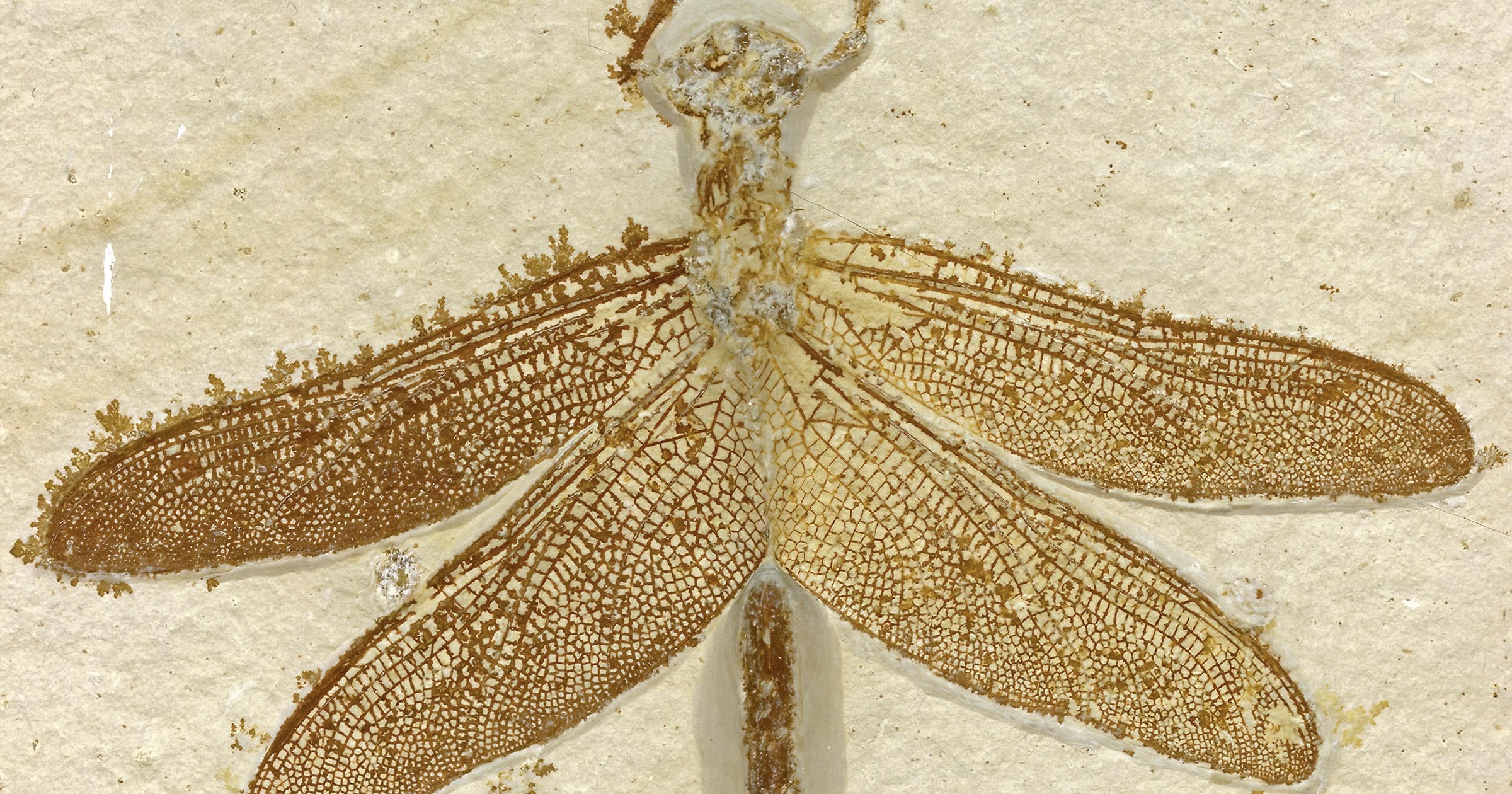 Intelligent Design
Intelligent Design
 Paleontology
Paleontology
Fossil Friday: Dragonfly from the Upper Jurassic

This beautiful fossil dragonfly from the Upper Jurassic Solnhofen limestones in Bavaria is about 150 million years old. It is a new species that was described by me (Bechly 2015) and named Mesuropetala schaeferi in honor of the German collector Stefan Schäfer.
The insect is completely preserved and has a forewing length of two inches. The rounded bases of the hind wings show that it is a female specimen. These animals look very similar to their modern relatives of the darner family Aeshnidae. The remarkable preservation of the wing venation is due to a mineral “re-tracing“ with iron oxide dendrites along the hollow veins.
Dragonflies are my special field of expertise and one of my favorite groups of animals, because of their bright colors, their fascinating compound eyes with up to 30,000 facets, their stunning flight capabilities like little helicopters, their highly complex mating behavior, and of course their rich fossil record that spans 320 million years from the Carboniferous to the Holocene. Their aquatic larvae have remarkable features too, such as jet propulsion locomotion and a prehensile mask to catch prey. When you feed captive dragonfly larvae worms with a pincer they exhibit almost vertebrate-like behavior and awareness, following your movements with their head and the large compound eyes. The adults mate in the famous heart-shaped wheel position, which earned them their French vernacular name “papillon d’amour“ (love butterflies). The males possess a very complex secondary copulatory apparatus that is unique to dragonflies and damselflies (order Odonata). The same apparatus with all homologous parts occurs in all three living suborders of odonates, but surprisingly in each of the suborders a different structure of this apparatus is developed as an intromittent organ (functional penis), which is also used to remove sperm from previous copulations of the female with other males prior to transferring their own sperm.
This phenomenon is called sperm competition and requires a co-evolution of males and females (Córdoba-Aquilar et al. 2003). This of course makes the so-called waiting time problem even worse for Darwinism, because the proper matching mutations would have to occur in both sexes in the same population. Even though you can formulate a crude evolutionary scenario as to how such a complex new apparatus could evolve in principle, which I actually did in a scientific paper (Fleck et al. 2004), any such speculation does not explain the very origin of the required information. Almost everything in the wonderful construction of dragonflies cries out for a design explanation.
Literature
- Bechly G 2015: [Chapter] Insekten (Hexapoda). pp. 239-270 in: Arratia G, Schultze HP, Tischlinger H & Viohl G (eds). Solnhofen – Ein Fenster in die Jurazeit. 2 vols. Pfeil Verlag, Munich, 620 pp. https://pfeil-verlag.de/publikationen/solnhofen-ein-fenster-in-die-jurazeit/
- Córdoba-Aquilar A, Uhía E & Cordero Rivera A 2003. Sperm competition in Odonata (Insecta): the evolution of female sperm storage and rivals’ sperm displacement. Journal of Zoology 261(4), 381-398. DOI: https://doi.org/10.1017/S0952836903004357.
- Fleck G, Bechly G, Martínez-Delclòs X, Jarzembowski E & Nel A. 2004: A revision of the Upper Jurassic-Lower Cretaceous dragonfly family Tarsophlebiidae, with a discussion on the phylogenetic positions of the Tarsophlebiidae and Sieblosiidae (Insecta, Odonatoptera, Panodonata). Geodiversitas 26(1), 33-60. https://sciencepress.mnhn.fr/sites/default/files/articles/pdf/g2004n1a3.pdf
